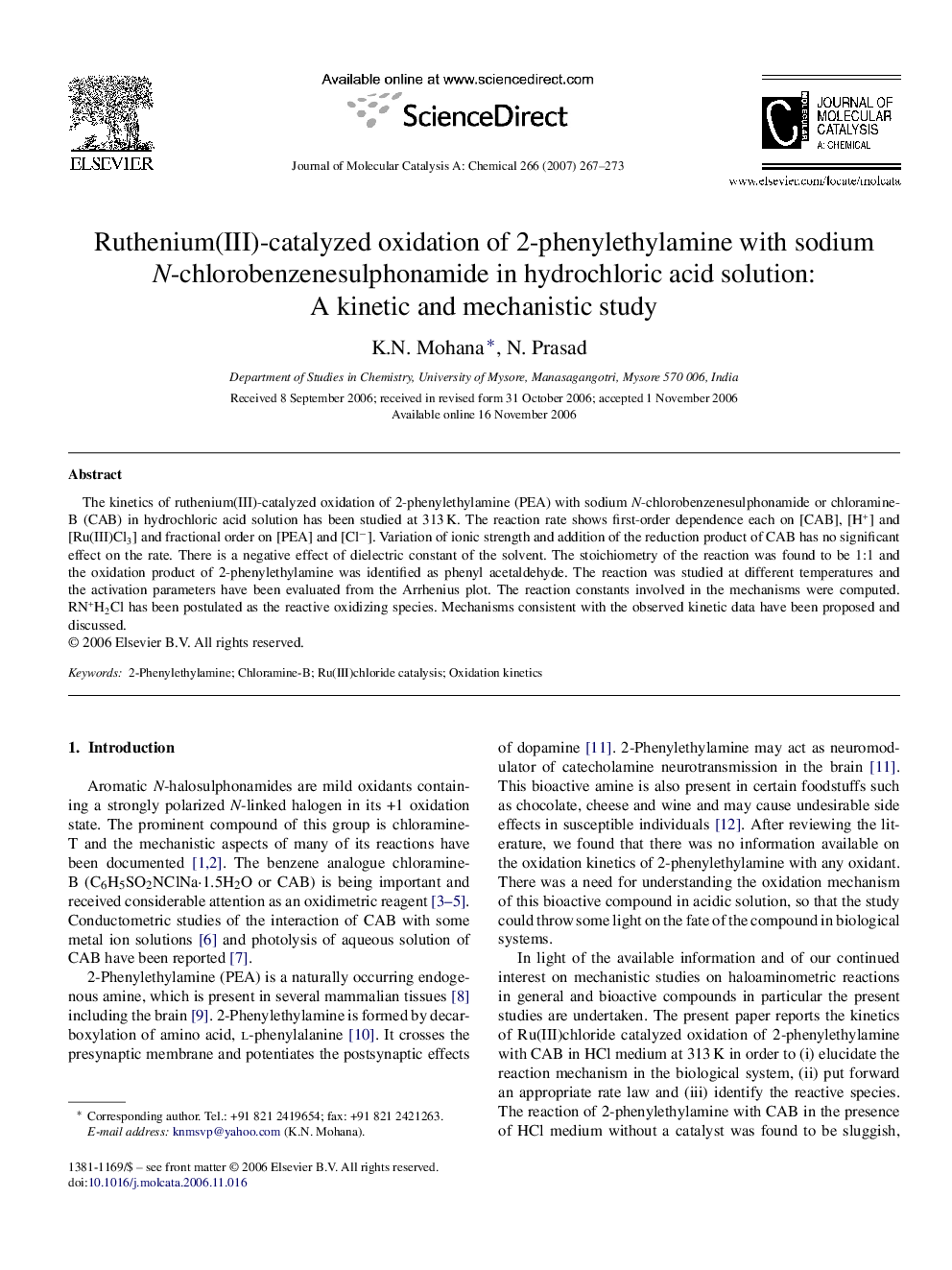| Article ID | Journal | Published Year | Pages | File Type |
|---|---|---|---|---|
| 68007 | Journal of Molecular Catalysis A: Chemical | 2007 | 7 Pages |
The kinetics of ruthenium(III)-catalyzed oxidation of 2-phenylethylamine (PEA) with sodium N-chlorobenzenesulphonamide or chloramine-B (CAB) in hydrochloric acid solution has been studied at 313 K. The reaction rate shows first-order dependence each on [CAB], [H+] and [Ru(III)Cl3] and fractional order on [PEA] and [Cl−]. Variation of ionic strength and addition of the reduction product of CAB has no significant effect on the rate. There is a negative effect of dielectric constant of the solvent. The stoichiometry of the reaction was found to be 1:1 and the oxidation product of 2-phenylethylamine was identified as phenyl acetaldehyde. The reaction was studied at different temperatures and the activation parameters have been evaluated from the Arrhenius plot. The reaction constants involved in the mechanisms were computed. RN+H2Cl has been postulated as the reactive oxidizing species. Mechanisms consistent with the observed kinetic data have been proposed and discussed.
Graphical abstractThe kinetics of Ru(III)-catalyzed oxidation of 2-phenylethylamine with sodium N-chlorobenzenesulphonamide has been studied in acid medium. The reaction rate shows first-order dependence each on [CAB], [H+] and [Ru(III)Cl3] and fractional order on [PEA] and [Cl−]. The reaction stoichiometry was found to be 1:1 and the oxidation product was identified as phenyl acetaldehyde. Activation parameters have been evaluated from the Arrhenius plot. RN+H2Cl has been postulated as the reactive oxidizing species. Plausible mechanism and the related rate laws have been deduced.Figure optionsDownload full-size imageDownload as PowerPoint slide
